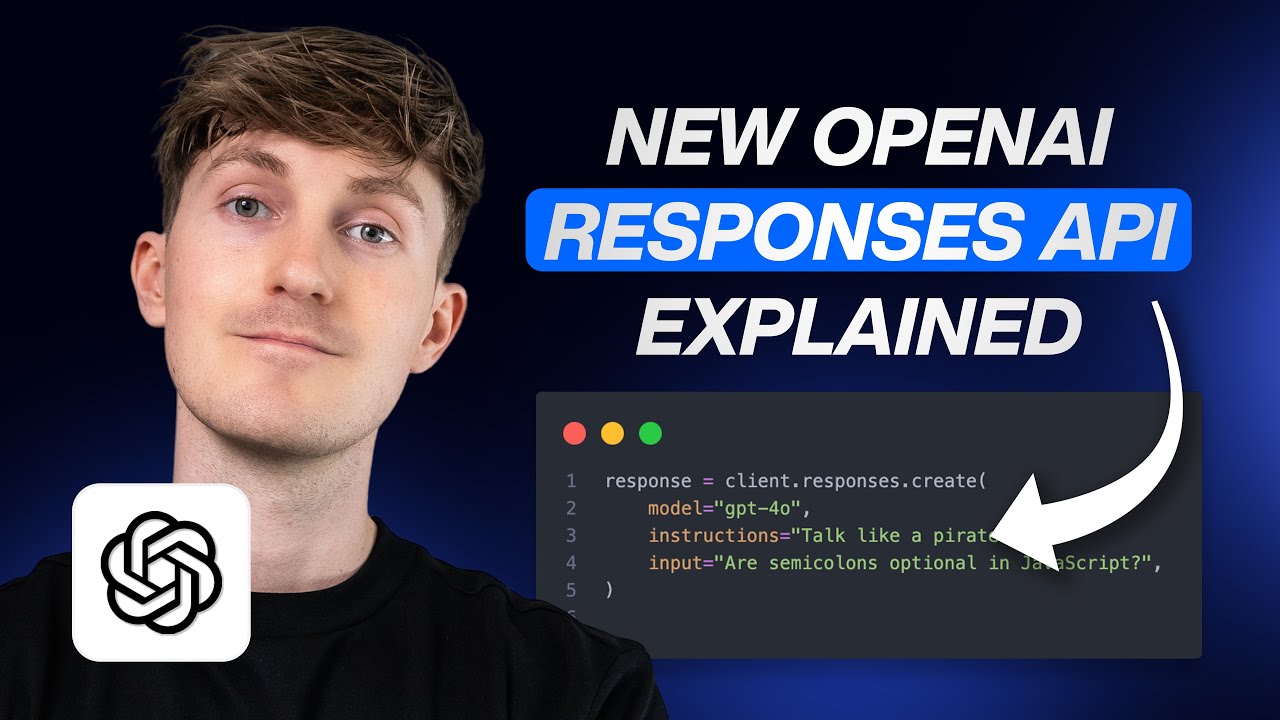In the video, Dave Eilar introduces the new OpenAI Responses API, highlighting its backward compatibility with the previous Chat Completions API and its enhanced features, such as simplified input structures and improved conversation state management. He encourages developers to embrace the new API for future projects while planning a gradual migration from the old system, emphasizing the importance of understanding AI engineering principles.
In the video, Dave Eilar introduces the newly released OpenAI Responses API, highlighting its significance for developers and the potential impact on existing applications. He emphasizes that every time OpenAI makes a significant update, it can create anxiety among developers as they must adapt to new technologies to remain relevant. Eilar aims to provide a comprehensive walkthrough of the Responses API, detailing its features and how it differs from the previous Chat Completions API. He encourages viewers to consider the migration timeline, as OpenAI plans to sunset the Chat Completions API by the end of 2026.
Eilar outlines several key features of the Responses API, including backward compatibility with the Chat Completions API, which means that all functionalities of the previous API are retained while adding new capabilities. He discusses the simplified interface for various interactions, the introduction of a developer role, and improved support for reasoning models. Additionally, the API now includes native support for web and file searches, making it easier for developers to integrate these functionalities into their applications.
The video also covers practical examples to illustrate the differences between the Chat Completions API and the Responses API. Eilar demonstrates how the new API allows for a more straightforward input structure, enabling developers to send single strings or lists of messages without the need for complex formatting. He highlights the new developer role, which allows for more granular instructions, and explains the hierarchy of prompts that dictate how the model responds to queries.
Eilar further explores the new conversation state management feature, which allows developers to reference previous interactions using response IDs, simplifying the process of maintaining context in conversations. He also touches on function calling and structured output, emphasizing that while these features remain similar to the previous API, they are now more streamlined. The video concludes with a discussion on web search and file search capabilities, as well as the importance of reasoning models in optimizing AI responses.
In summary, Eilar encourages developers to embrace the Responses API for new projects while planning for a gradual migration from the Chat Completions API. He stresses the importance of understanding the underlying principles of AI engineering, even as the API introduces new abstractions. The video serves as a valuable resource for developers looking to adapt to the latest advancements in OpenAI’s technology and build more effective AI applications.
